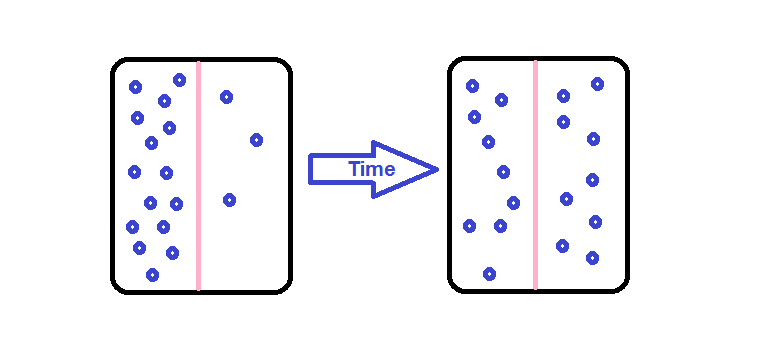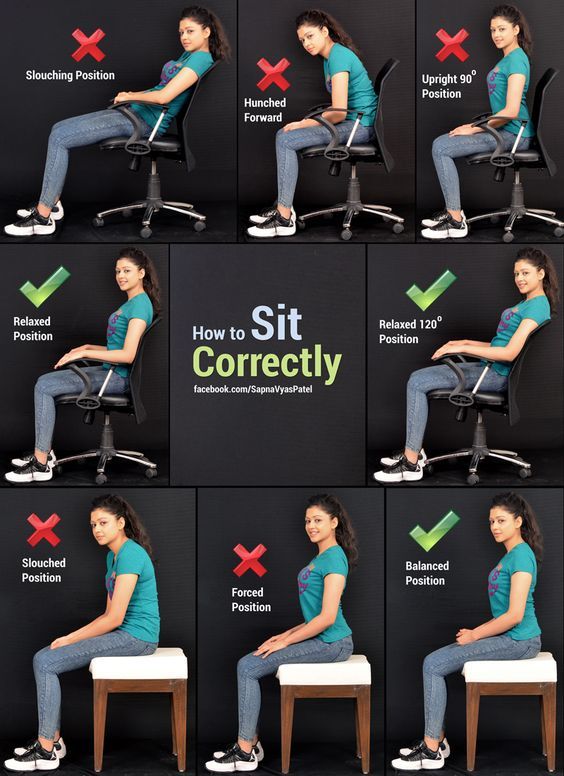Eight out of ten adults experience lower back pain once in their lifetime. I am one of those people and I’m definitely not looking forward to my participation award. I know how it feels like to step out of bed and barely being able to put on your socks. Having lower back pain sucks. But 9 out of 10 patients that suffer from lower back pain don’t even know the primary cause of it.
Video Summary
Back Pain? Blame Our Evolution
Once upon a time in our fairly recent past, our ancestors felt the urgency to stand up and leave our quadruped neighbors behind. Habitual bipedalism, fancy word for regularly walking on two legs, came with a lot of advantages. With two rear limbs instead of four, we were able to more efficiently use our hands and create tools with them.
Sadly, life on two legs also brought along its disadvantages. Our spine had four supporting pillars previously, but now it only got two. The back is therefore naturally one of the weak links of our human anatomy. Our spine needs constant support from its supporting muscles to minimize the load on the spine. With no muscle support (tested on dead bodies) the back can only bear loads up to 5 pounds without collapsing [reference Panjabi 1989]. With well-developed torso muscles, the spine can take loads up to 2000 pounds. That’s a 400-fold increase.
Most people that come to me with a history of a herniated disc (that’s when the discs between the vertebral bodies are fully collapsed, really severe incident), tell me the ‘story of the pencil’. The injury with the following severe pain usually gets triggered by picking up a small, everyday object. Such as a pencil. Not as you may think by trying to lift 100 pounds – no, but by a simple thing – such as a pencil.
This tells us that damage in your back adds up over time, it’s a so called cumulative trauma disorder. Meaning back pain is a result of your daily habits.
Sitting Is the New Smoking
Whenever I sit for too long, my back hurts. In fact, 54% of Americans who experience lower back pain spend the majority of their workday sitting. But isn’t sitting something that should reduce the stress of your back? No, just the opposite.
The joints between the bones of the spine are not directly linked to the blood supply. These joints instead get nourished through a process called diffusion. Diffusion works because molecules (such as oxygen, important for cells) are constantly moving and try to get as much space for themselves as they can. A key element for diffusion therefore is a pressure difference. In the image below the left room contains more moving molecules than the right, that’s why the molecules from the left are moving to the right. This way nutrition gets transformed into the joints, whereas toxins are transported out of the joints.
Sitting puts a lot of pressure on your spinal chord. The diffusion process therefore can’t function as efficiently. Nutrition and toxins can’t be properly transported, the joints get damaged.
Sit Properly
If sitting can play such a huge part in the creation of your lower back pain, how do you sit properly then?
Is it better to sit with a straight back or should you rather lay back in your chair? Can I cross my legs when I’m sitting or should I have a symmetrical position with my feet? These are questions that I hear on a daily basis. The answer might shock you – according to recent science – all of them are right. The best sitting position is an ever-changing one. An ever-changing position minimizes the pressure on certain points of your spine and spreads it on the whole part.
Credit: StayWow
Stand Up More
Even better than a sitting position is a stand up position. Standing dramatically reduces the pressure on your spine. If you’re forced to work on a desk the whole day though, you have two options.
Take breaks every hour of about 2-3 minutes.
Set an alarm on your phone that goes off every hour! In that time you stand up and reach to the ceiling, on your toe tips with fully extended arms. You’re inhaling during the whole process. You do this activity for 20 seconds. Afterwards you’re walking through the office for the next 2 minutes. You might grab a healthy snack or some water in that time. The exercise relieves the pressure on your spine, while the walking makes sure that the joints on your spine are properly used.
Or get a standing desk.
One of the best companies on the market for Standing Desks, according to my research, is Autonomous. Autonomous offers a rather cheap Standing Desk, with the ability to change the height. Which means you can start the day standing and switch to sitting if you’re tired.
Exercise for Lower Back Pain
Sitting is an immobile position. Your joints are made for movement and therefore need movement to function properly. If humans are moving, all moving parts: e.g. the joints, bones and muscles get strengthened. If you’re in a rested position for too long, your tissues start to deteriorate. You have to get the right amount of activity in.
But not too much activity. There’s a chance that going to the gym may even increase your risk of lower back pain. I know plenty of friends with chiseled bodies that suffer from pain in the spine regularly. Huge muscles do not prevent you from back pain. In your training you should focus on building up the muscles that are stabilizing your back and relieve pressure. Squats with 400 pounds don’t do the trick.
The more weight you carry around, the more weight your spinal chord has to bear on a regular basis. That’s one of the reasons why huge, muscular guys can suffer from back pain too. One of the most important goals of your exercise regimen should therefore be weight loss.
Here are some important tips for you to consider when starting an exercise regimen:
Make sure you implement cardiovascular training in your workout routine.
This will not only help you lose weight, it will also make sure that your arteries, which flow to the tissue next to your spinal discs, are free of placque and can therefore transport nutrients properly.
Important: If you have rather strong back pain, maybe even an herniated disc, don’t start running on a threadmill. Running is an high-impact exercise. Which means there are continuous, reocurring high pressure points on your spine. Your endurance training should therefore either be fast-paced walking or a training on the elliptical trainer for the beginning, because both have little to no stressful impact on your backbone.
Focus on developing your whole core if you want to minimize your pain.
There are some people that do hundreds of sit ups a day. While sit ups are a good exercise for your abdomen, it also puts pressure on your spine due to the bending movement. A sixpack workout routine is one-sided. Your abs may become overdeveloped in comparison to your back muscles. You’ve created an imbalance. A great way to train your abdominal muscles and back muscles simultaneously, is holding the plank position.
Stretch only if you have tight muscles.
I remember stretching every morning after I woke up. I took 10 minutes out of my day to just work on my flexibility and prevent injuries. Little did I know that I was actually promoting an injury, by doing so.
Contrary to common belief, stretching is only partially beneficial to treating lower back pain. Stretching makes sense if tight muscles (such as the hamstrings) are forcing you to constantly bend your back. Stretching to treat pain doesn’t make sense if you’re already on a good level of flexibility. Hyper-mobility may even enforce back pain.
If you found out that you had tight muscles that you need to stretch, try to stretch them at least three times a week. Don’t stretch your muscles right after you wake up in the morning. This is because your spinal discs soak themselves up in fluid over the nighttime. Every bending and excessive loads on your spine is much worse in that soaked-up state. Postpone your stretching regime to two-to three hours after you’ve woken up.
Where to Start
The key to improving your habits is awareness. Try to get aware of your back while you’re sitting down, laying down or lifting an object next time. This awareness of your body is called proprioception. For example, you have to be aware whether your back is bended or straight in this very second. Trust me, it is harder than you might think. You may need to ask a friend for the first few tries. But the change that this awareness can make in your back pain is absolutely fascinating. This consciousness of your body is one of the most important things in your recovery or prevention.
Here are a few behavioural tactics that you need to be considering:
If you’re leaning forward more than 30 degrees with your upper body, support your spine with your arms.
Ever tried to show a colleague of yours a complex issue and found yourself awkwardly leaning forward on their desk, pointing with your fingers to his paper? If that ever happens again, make sure you’re using the not-pointing arm to support yourself on the desk.
Keep a straight back.
Be it while exercising, stretching or standing. If you’re bending your back you’re putting stress on small areas of your spinal chord. A straight back redistributes the force to a bigger area. You’re minimizing the pressure. Remember this whenever you’re at the gym and reracking your weights, focus on having a neutral spine.
Put symmetrical loads on your spine.
I used to play the trumpet when I was a child. The instrument is pretty heavy. The trumpet gets transported in a big, metallic suitcase – with no wheels. Being the nature of suitcases, you only carry it with one arm, on one side of your body. This forced me to constantly lean on the other side with my upper body, while transporting the instrument from A to B. Not really the healthiest activity for your spine as you can imagine.
If you have to carry heavy objects, carry them with both arms. Put the object in the middle of your body and keep it as close to your mass of gravity as you can. If this is not possible, try to carry the same amount on the left side than you do on the right side. This puts the stress vertically on a fully extended spine. The load is much better bearable for your spine.
Stay Away From the Back Pain League
Our world is getting more sedentary. We will continue to develop faster transportation, more comfortable houses and easier lives. While our technological progress definitely has its amazing benefits, it sadly has its downsides too. The danger for back pain will continue to rise on our ever-increasing motionless planet. It’s time to raise awareness.
Featured photo credit: Pexels via pexels.com














































